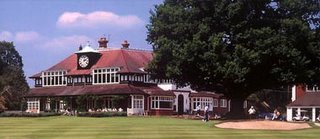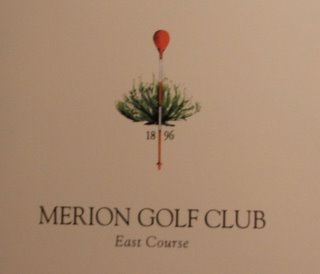
Located right down the road from the Wentworth Estate in Ascot, Surrey, outside of London is Sunningdale, one of the world's great golf courses. Sunningdale Old (ranked #44 in the world) was designed by William Park Jr. in 1901 and was tinkered with over the years by H.S. Colt who served as the secretary at Sunningdale for many years. Once you are inside the electronic entrance gates, you are in an oasis. The clubhouse, locker room, pro shop and property have a good feel to them and the course has an intangible quality that gets the adrenaline going.
Sunningdale has scenic beauty to stack up against most of the world's best. It achieves a high ranking in the world without being located near the water and without having hosted any Open Championships. The terrain, sand, birch trees, heather, gorse, pines and water come together beautifully to create a unique environment. Heathland courses such as Sunningdale were developed due primarily to the underlying land's resemblance to seaside links courses. Sandy soil, the absence of mud in the winter and good drainage. Most of the area around London has a clay base and thus is not ideally suited for golf. The exception is the Surrey heathland where Sunningdale, Wentworth and Walton Heath are all located.
The course starts with a relatively easy par five opening hold with an O.B. on the right bordering the roadway. After you putt and to to the 2nd tee box you are in peaceful isolation for the rest of the round. I would imagine some people wouldn't like Sunningdale because it has some blind shots and several short holes. The stretch of holes beginning at the 5th and continuing to the 8th are as good a stretch of holes as you can find on any golf course. What makes them good is the risk/reward nature of them combined with their natural beauty. They are a cross between strategic design and penal design that works. As you play Sunningdale you are reminded as much as anything of Pine Valley. You can see the similarities between Pine Valley and Sunningdale throughout the round. This is not surprising given Colt's influence on the design at Pine Valley.

Sunningdale Old 10th hole
Aside from a world-class golf course, Sunningdale also has a very strong Bobby Jones history. It was on Sunningdale Old during an Open Championship qualifier in 1926 that Jones shot what was described as a perfect round. The standard scratch score on the course at the time was 75. He shot a 66 with a 33 on the front and a 33 on the back. He had 33 full shots and 33 putts. The highest number written on his scorecard was a four. This feat is even more incredible if put into its proper context. He was using hickory shafted clubs and a golf ball that was nowhere near those of today's standard. On ten holes he hit his shot to the green with a two iron or a wood. The more I learn about Bobby Jones, the more I see why he is a golf legend.

Sunningdale's 8th hole
One of the problems I am finding writing this blog is that it is difficult not to repeat superlatives again and again. Any course that has made it onto the list has fine attributes (although Royal Troon only has one) and it is easy to wear out words like great, special and best when describing them. Sunningdale not only has all the attributes necessary for greatness but combines them all together into a package that makes it world class. I have been very lucky indeed thus far in my attempt to play the top 100 courses in the world. It is exposing me to experiences and places that are very privileged and special. Sunningdale has a very healthy attitude regarding visitors who will respect their rules. We wish more of America's private clubs would open up a bit more and allow visitors to share some of the world's great courses. I was fortunate to play Sunningdale on a nice crisp Fall day with the temperature in the high 50s. At the risk of over-using superlatives: I have had few finer experiences than sitting in the Sunningdale clubhouse after the round of golf with a pint of Guinness reflecting back on a brilliant days golf.








